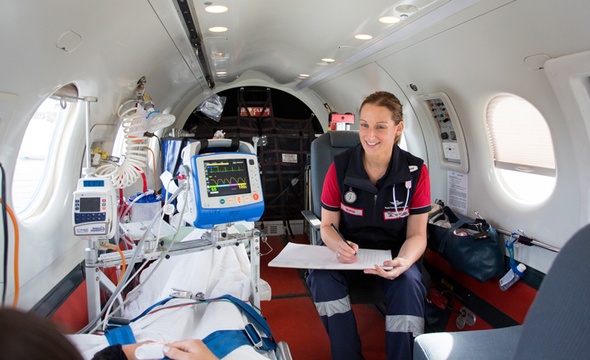
Pic: RFDS
Patients in remote areas of WA with large vessel occlusion stroke are achieving excellent outcomes thanks to efficient aeromedical transfers to a thrombectomy unit in Perth.
Despite covering an area of 2.5 million square km, – four times the size of Texas – the Neurological Intervention and Imaging Service of WA is reporting similar outcomes after LVO stroke for remote and urban patients.
After having LVO identified by CT imaging at rural ‘spoke’ hospitals, patients are transported by the Royal Flying Doctor Service (RFDS) over distance up to 2600km to undergo thrombectomy at the state’s high volume ‘hub’ at the Sir Charles Gairdner Hospital.
New figures published by the unit show that over a two year period from 2016-2018 the unit performed thrombectomies on 30 aeromedically retrieved patients from rural and remote regions, accounting for one in 20 (6%) of the unit’s workload.
Almost all the patients (90%) were selected for air transfer after undergoing CT imaging at rural centres such as Bunbury, Albany and Geraldton or remote hospitals including Port Hedland (1650km distant) and Christmas Island (2600km).
The mean ictus to recanalisation time was 657 minutes (11 hours) , more than twice that of urban patients (310 minutes). The ictus to recanalisation times were 980 minutes (16 hours) for posterior circulation strokes and 576 minutes (9.6 hours) for anterior circulation strokes, well within the timeframes of trials such as DAWN, the report authors Dr Matthew Crockett and Dr William McAuliffe noted.
Much of the delay in time to thrombectomy for rural and remote patients was due to ictus to spoke hospital CT imaging time (316 minutes) and CT to flight departure (390 minutes) rather than the flying time, which averaged 84 minutes.